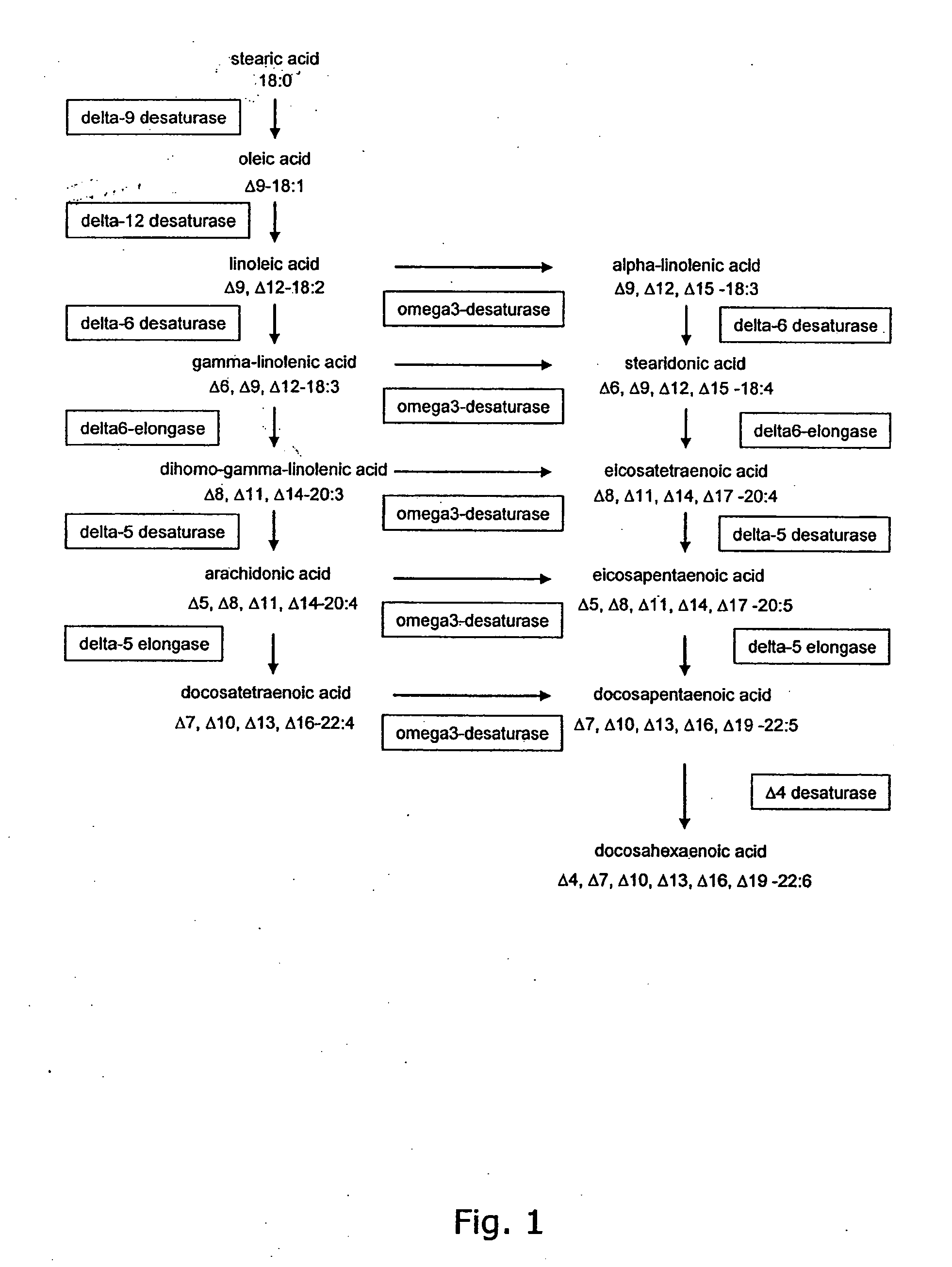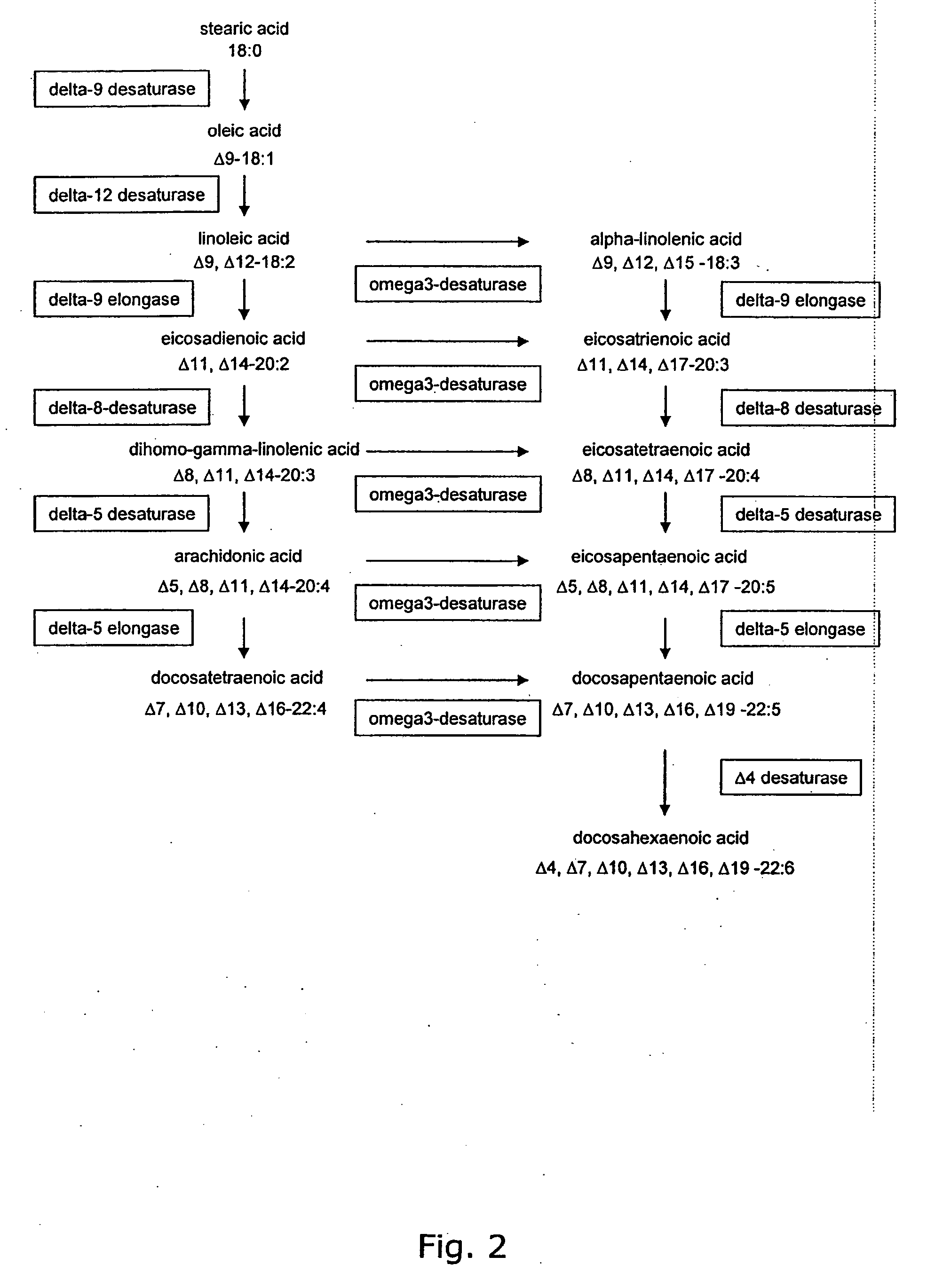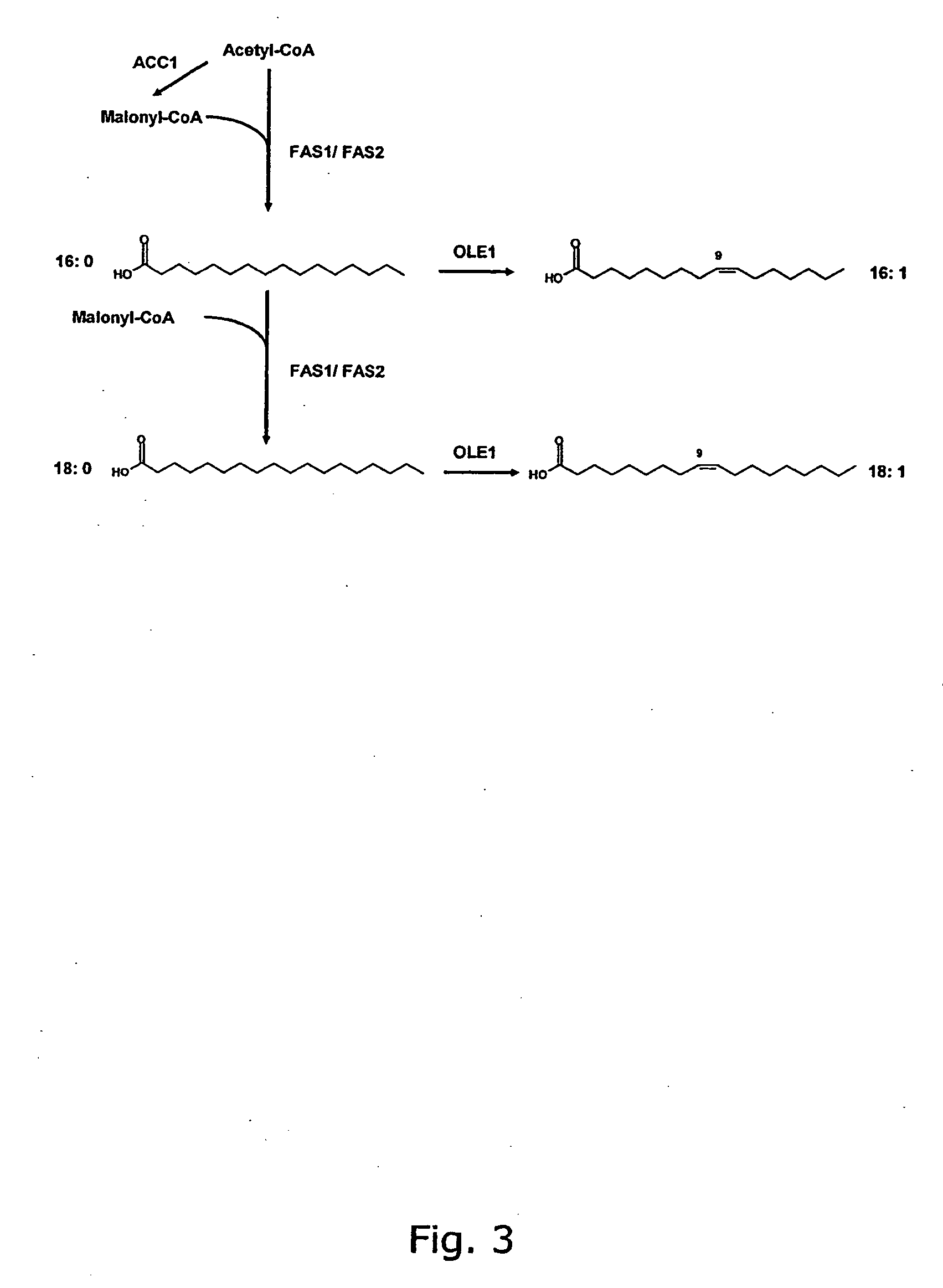Metabolically engineered cells for the production of polyunsaturated fatty acids
a technology of polyunsaturated fatty acids and metabolic engineered cells, which is applied in the field of fatty acid production, can solve the problems of insufficient production of inability of infancy to synthesize sufficient amounts of dha, and inability to produce pufas with four or more double bonds at sufficient, etc., and achieves high quality.
- Summary
- Abstract
- Description
- Claims
- Application Information
AI Technical Summary
Benefits of technology
Problems solved by technology
Method used
Image
Examples
example 1
Isolation of Genes Encoding Delta-9 Desaturase, Delta-12 Desaturase, Delta-6 Desaturase, Delta-6 Elongase and Delta-5 Desaturase
[0460] The fungus Mortierella alpina produces arachidonic acid via a pathway, where oleic acid is desaturated and elongated in turn by a delta-12 desaturase, a delta-6 desaturase, a delta-6 elongase and a delta-5 desaturase. The nucleotide sequences encoding these enzymes were amplified by PCR using first strand cDNA from Mortierella alpina CBS 608.70. In addition, the nucleotide sequence coding for the delta-9 desaturase of M. alpina was isolated. The defined primers used for the amplification were designed to match the published sequences of M. alpina genes encoding these enzymes.
[0461] The procedure was as follows:
[0462]M. alpina CBS 608.70 was cultivated in 100 ml GY medium (20 g / L glucose, 10 g / L yeast extract pH 6.0) at room temperature for 3 days. Biomass was collected by filtration and total RNA was isolated using Trizol reagent (Gibco BRL). Appr...
example 2
Construction of a Yeast Vector for Expression of Delta-12 Desaturase
[0463] The gene encoding delta-12 desaturase, isolated as described in Example 1, was reamplified by PCR using the primers 5′GACCTCGAGTAAGCTTATGGCACCTCCCAACACTATTG 3′ (SEQ ID NO: 125) and 5′GCTAGCCGCGGTACCAATTACTTCTTGAAAAAGACC 3′ (SEQ ID NO: 126). These primers introduced XhoI and NheI restriction sites at the 5′ and 3′ ends of the gene, respectively, and allowed ligation of the XhoI / NheI restricted PCR fragment into an XhoI / NheI digested pESC-TRP vector (Stratagene) to yield pESC-TRP-delta-12. The sequence of the gene encoding delta-12 desaturase (SEQ ID NO 5) was obtained by sequencing of two different clones of pESC-TRP-delta-12.
example 3
Construction of a Yeast Vector for Expression of Delta-12 Desaturase and Delta-6 Desaturase
[0464] The gene encoding delta-6 desaturase was isolated as described in Example 1. The resulting PCR fragment contained SpeI and ClaI restriction sites at the 5′ and 3′ ends of the gene, respectively. The fragment was restricted with SpeI and ClaI and was ligated into SpeI / ClaI digested pESC-TRP-delta-12 (Example 2). The resulting plasmid, pESC-TRP-delta-12 delta-6, contained the genes encoding delta-12 desaturase and delta-6 desaturase under the control of the divergent GAL1 / GAL10 promoter (FIG. 9A). The sequence of the gene encoding delta-6 desaturase (SEQ ID NO 11) was obtained by sequencing of two different clones.
PUM
| Property | Measurement | Unit |
|---|---|---|
| Fraction | aaaaa | aaaaa |
| Fraction | aaaaa | aaaaa |
| Fraction | aaaaa | aaaaa |
Abstract
Description
Claims
Application Information
 Login to View More
Login to View More - R&D
- Intellectual Property
- Life Sciences
- Materials
- Tech Scout
- Unparalleled Data Quality
- Higher Quality Content
- 60% Fewer Hallucinations
Browse by: Latest US Patents, China's latest patents, Technical Efficacy Thesaurus, Application Domain, Technology Topic, Popular Technical Reports.
© 2025 PatSnap. All rights reserved.Legal|Privacy policy|Modern Slavery Act Transparency Statement|Sitemap|About US| Contact US: help@patsnap.com



